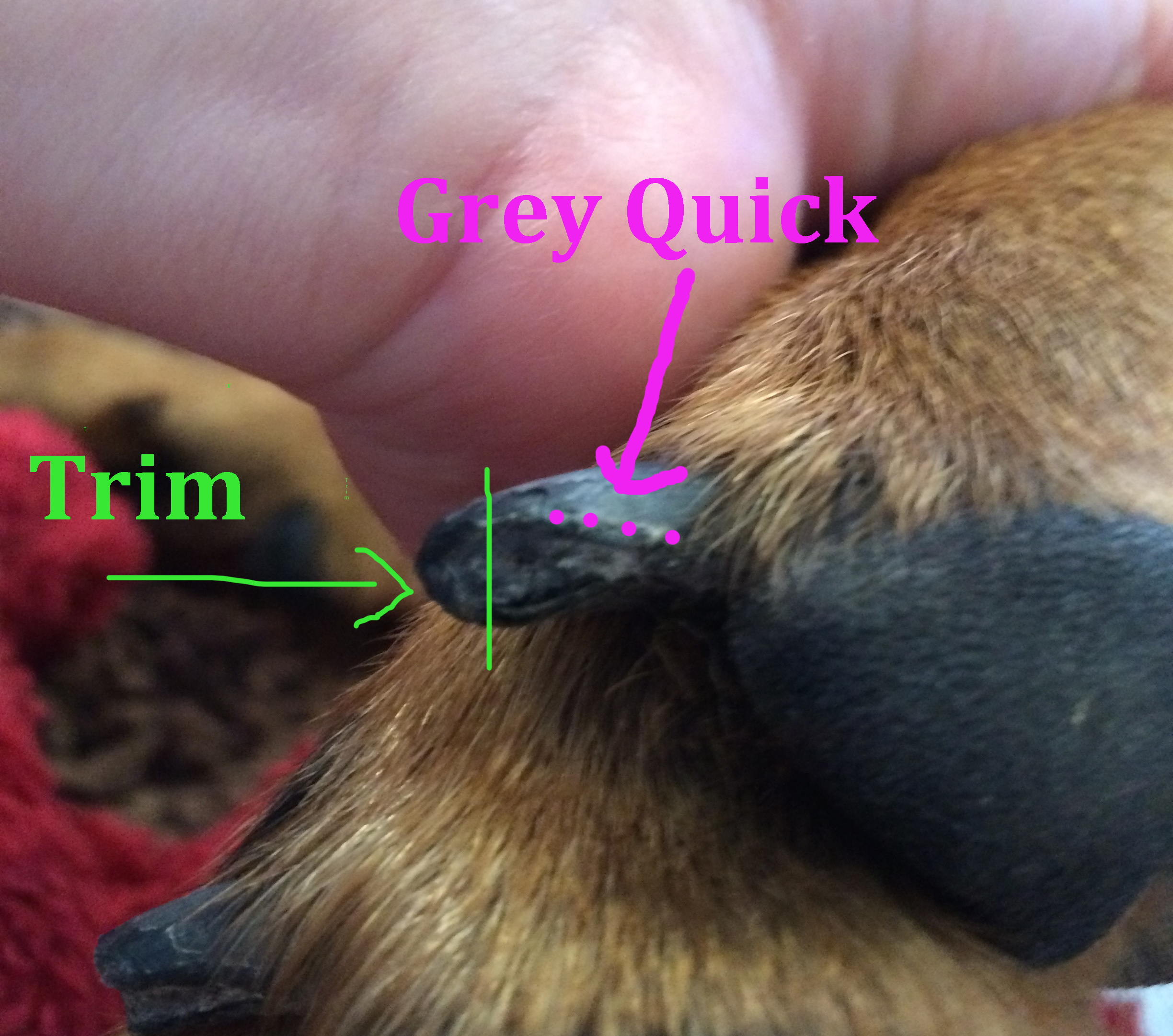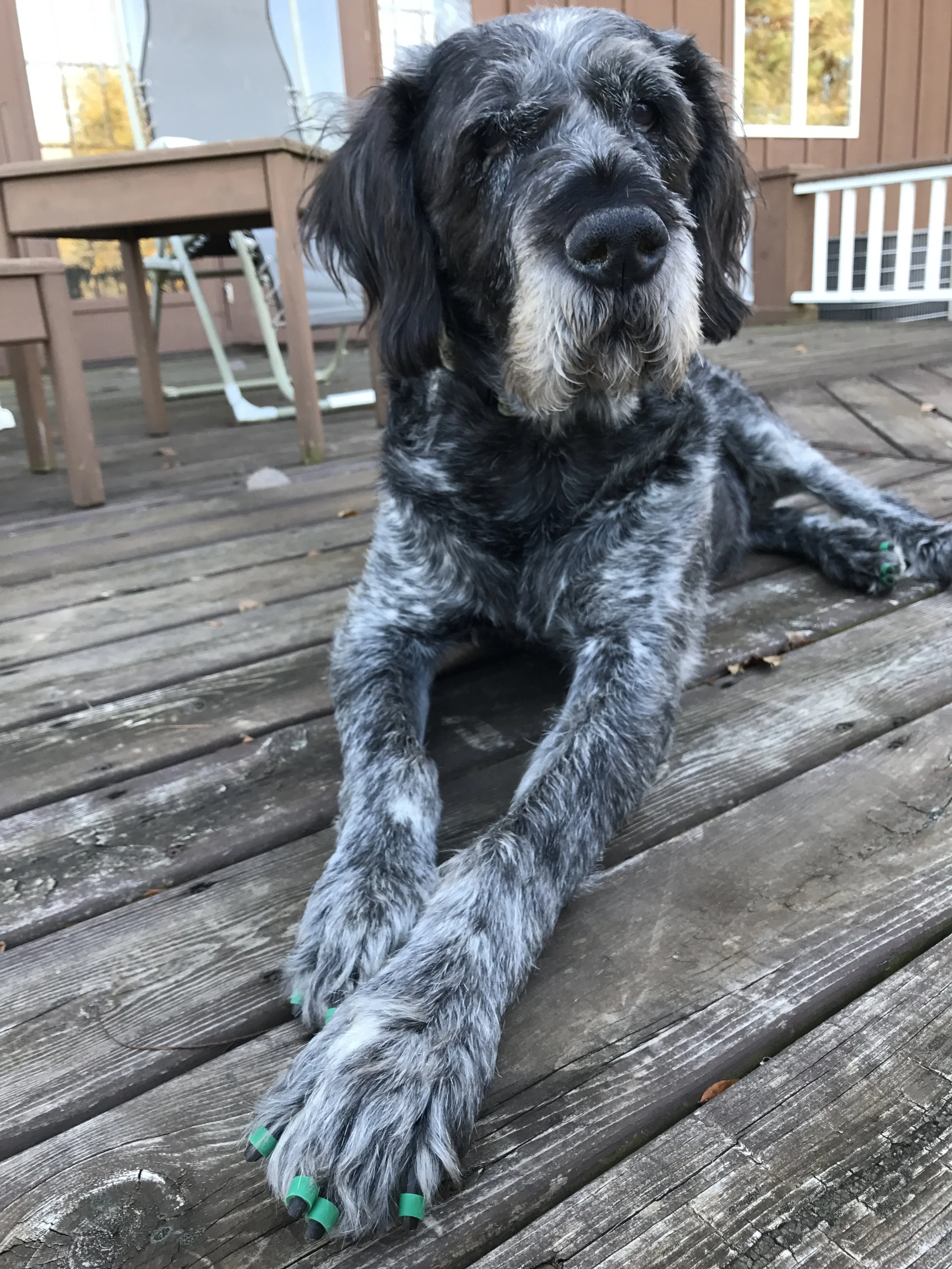How to Help Senior Dogs and Cats from Slipping & Falling
As a house call veterinarian, I observe pet’s as they move through their home environment. One area that I often see room for improvement is in setting up a safe and mobility friendly environment to prevent slipping. This is especially important with our senior pets as normal motion is so beneficial in so many ways, it helps keep their bodies limber and minds engaged.
Senior dogs & cats slip and fall for various reasons:
Decreased paw grip
Changes in a pet’s gait and weight bearing may be off from arthritis or other issue
A pet may have decreased vision causing a slip or fall
Slippery surfaces
Below is a list of tips to help support your senior pet move around safely in their environment.
1. Regularly trim your pet’s toenails and excess paw fur
Overgrown toenails can have a disastrous impact on dog’s and cat’s ability to safely and comfortably move around. Overgrown toenails can affect your pet’s gait, decrease grip & paw surface area in contact with the floor, can be painful, potentially cause musculoskeletal issues, and even become infected. Having your pet’s nails trimmed regularly is essential in maintaining a normal posture and gait. Take time to learn how to trim your pet’s nails properly and keep the process stress free. If you don’t feel comfortable with trimming your pet’s nails, or if your pet is very nervous when you attempt this, contact your veterinary clinic or pet groomer to help.
Some dog and cat breeds have excessive hair in between the toe padding which can decrease paw grip and the surface area of the paw pads that are in contact with the floor. Carefully clip or trim the excess fur on a regular basis.
2. Use carpet runners or yoga mats to provide stability and traction
Carpet runners and yoga mats can provide stability and traction, helping your pet keep active. High traffic areas and areas your pet frequents, such as areas that they eat, sleep, and congregate with family are important areas that should always traction for your pet to safely and comfortably get around. Hardwood or slippery floors can be difficult, dangerous and downright scary for some pets to navigate. I have personally seen many pets reluctant to walk on slippery surfaces and some pets even flat out refuse to walk on them! Make a runway if you have slippery floors so that your pet has a more comfortable and stable path to walk on. If you are using rugs and or carpet runners be sure they are secured to the floor to prevent them from sliding out when your pet (or anyone else) walks on them. On the stairs, if your pet is able to safely navigate them but needs more help with traction, then consider carpet strips made specifically for the stairs.
3. Block off Unsafe Areas
If your pet has access to stairs going up be sure they can safely navigate them. If you have any doubt if the stairs are suitable for your pet, then it is best to block them off. Pets with decreased vision, arthritis, or any other debilitating disease causing stairs to be difficult, then they should be blocked off with a baby or pet gate. Also consider if there are any places in the home that are unsafe and block them off.
4. Clear paths and avoid rearranging the home if your pet has decreased vision
Rearranging your home is stressful for senior pets and especially difficult for a pet with visual or cognitive impairment. When rearranging your home, go about the process slowly (over a period of days to week) so your pet is able to get used to the new arrangement. If you are using carpet runners or yoga mats, utilize bright colors or patterns that are easier for pets with decreased vision to see.
5. Keep important areas accessible and free from obstacles
Take time to observe your pet as they move around your home. Areas where you dog or cat eats, drinks, sleeps or plays should have good access and be free from clutter and obstacles so they can safely get to these important areas.
6. Use ramps
Pet ramps can be a great help in prevent your senior dog or cat from slipping and falling. In general, the more gradual the slope, the better. Be sure to have a supportive rug or mat on top of the ramp. Some pets warm up to using ramps easier than others, be patient and reward your pet as you help them adjust to using them.
7. Make modifications to the paw that can help increase grip and traction
ToeGrips are a nonslip gripper that helps to increase the surface area of the toe nails that comes in contact with the floor. They are applied directly over the nail.
PawFriction is a non slip coating that is applied directly to the paw surface to help give pet’s more grip as they move about.
Paw-Pads are adhesive nonslip traction pads that are applied directly to the paw surface to help increase paw grip.
Rubber booties are also an option to consider for increasing paw grip. There are several different brands available and many can also be purchased in a pet store.




